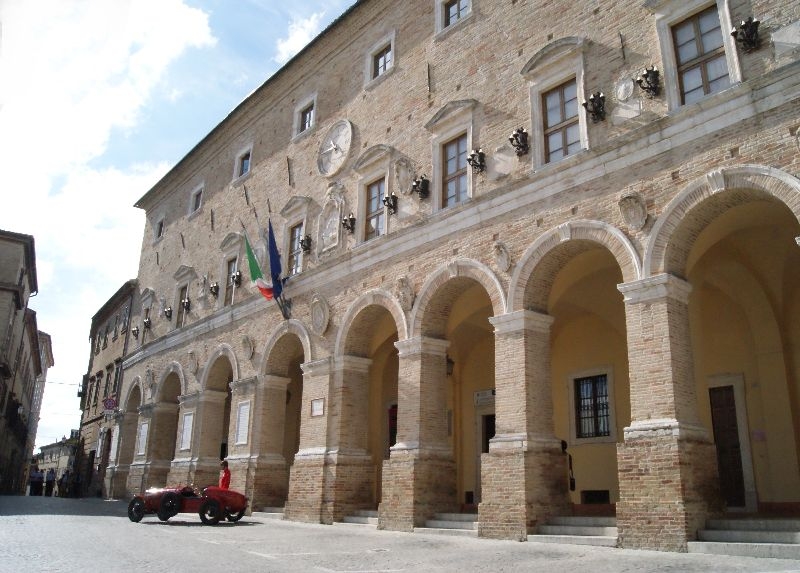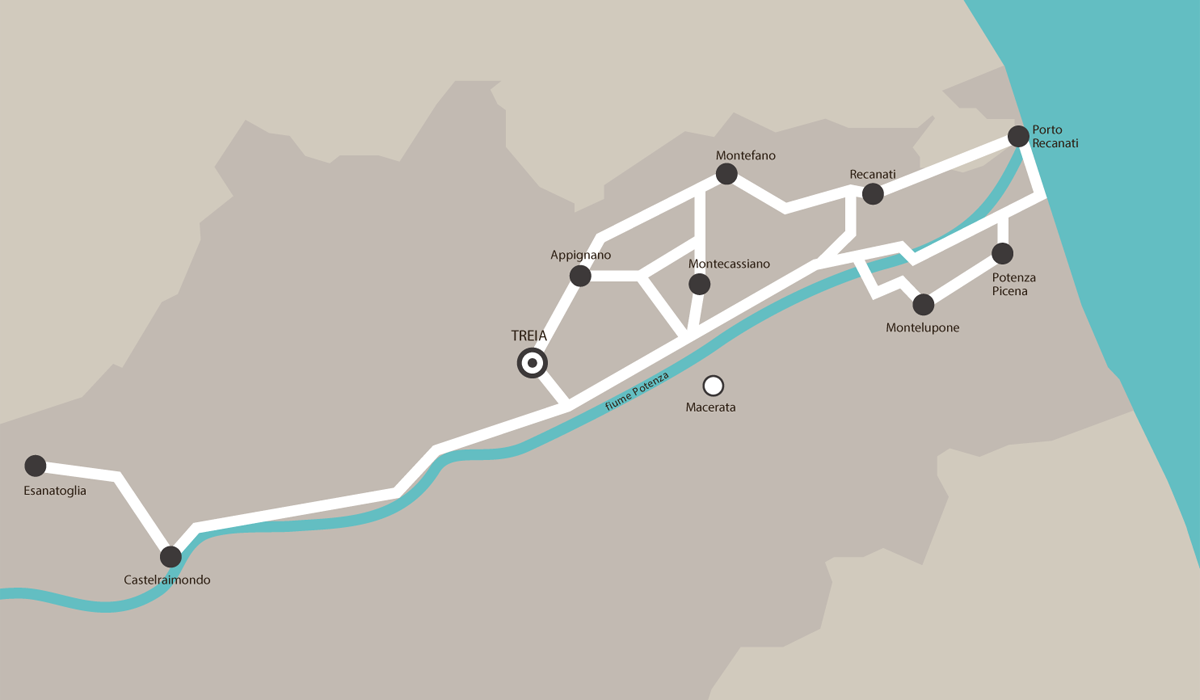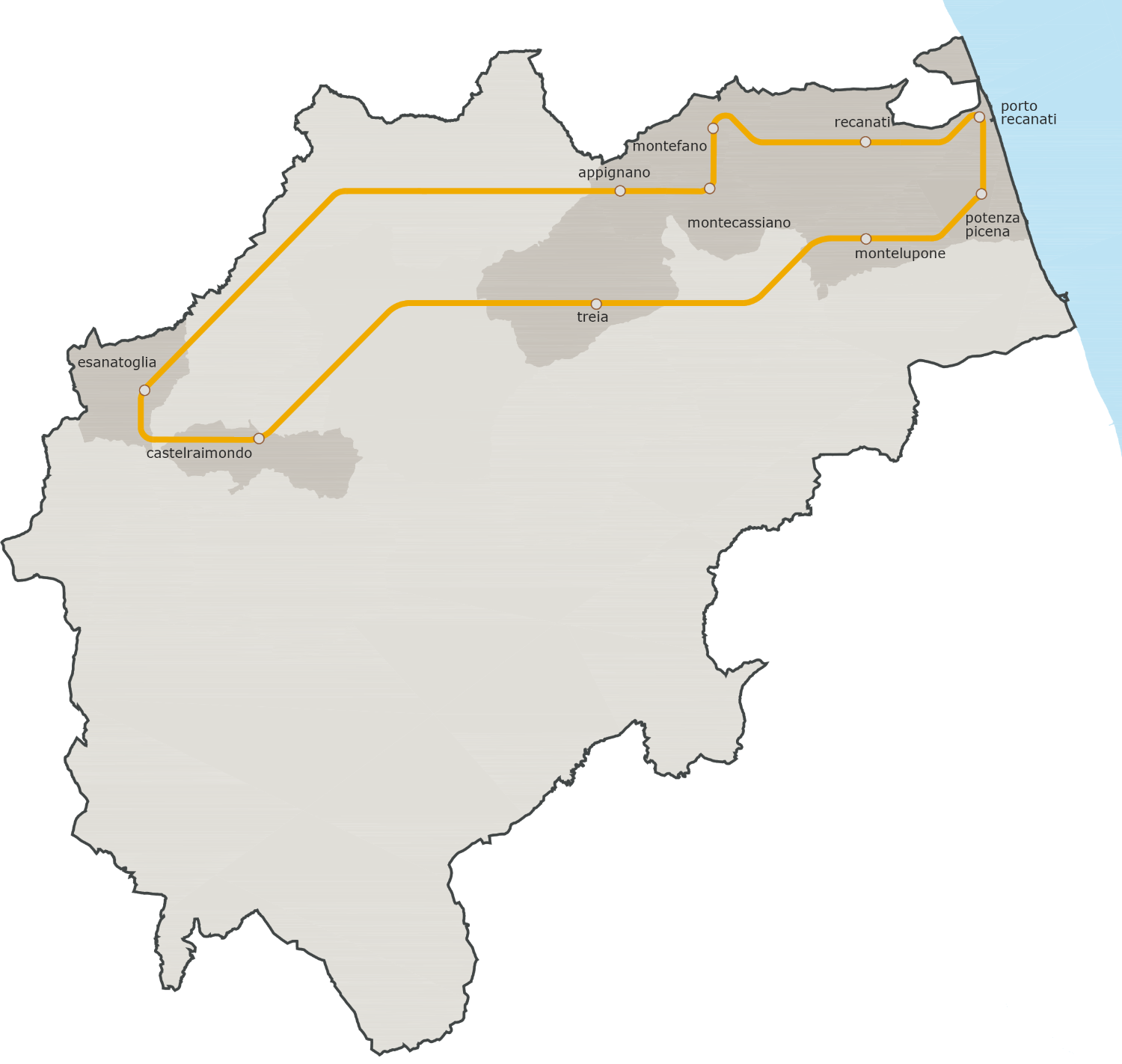

Municipality of Treia

BRIEF HISTORY ABOUT TREIA
Trea, Montecchio, Treia means 25 centuries of history that goes from the Roman period to the Middle Age and the modern age. From the promenade around the walls, the panorama sweeps from Mount Conero to the Sibillini mountains. The walls together with its towers bring us back to the twelfth century, the time of Beato Pietro from Treia mentioned in the “Fioretti” of Saint Francis, and the time of Emperor Frederick II, whose son Enzo tried, in vain, to conquer the city at the hands of Corrado d’Antiochia. The citizens of Treia defeated him at the Vallesacco Gate, that still stands in all its majesty, exactly as the Onglavina Tower does: constructed during the Lombard period, it is the city’s southern bulwark
The urban layout of the city is from the XI century. The Onglavina, Elce and Cassero castles that stood on the three hills of the city became fortresses able to face enemies attacks. A large linear axis on top of the hill ridge, having the lowest part on the north (Porta San Martino) and the highest on the south (Porta San Michele), crossed the three hills. These heels were reachable through two diagonal climbs, from Porta Vallesacco at the east to Porta Montana at the west, that crossed the principal axis and was linked to a third diagonal climb located in the opposite direction of Porta Montana. Parallel to the main axis, there are many streets intersected by diagonals, now called Via Monte Grappa and Via Garibaldi. The town kept the appearance of a rural center, with gardens, small vineyards, groups of trees, meadows and wild animals. As vestige of its medieval period, Treia still conserves some towers: Tower dell'Onglavina (or San Marco), the Tower of the Mill, the Roccaccia (the only remains of the castle of Mount Acuto) and the Casone, a tower house that stands isolated in Collevago.



















